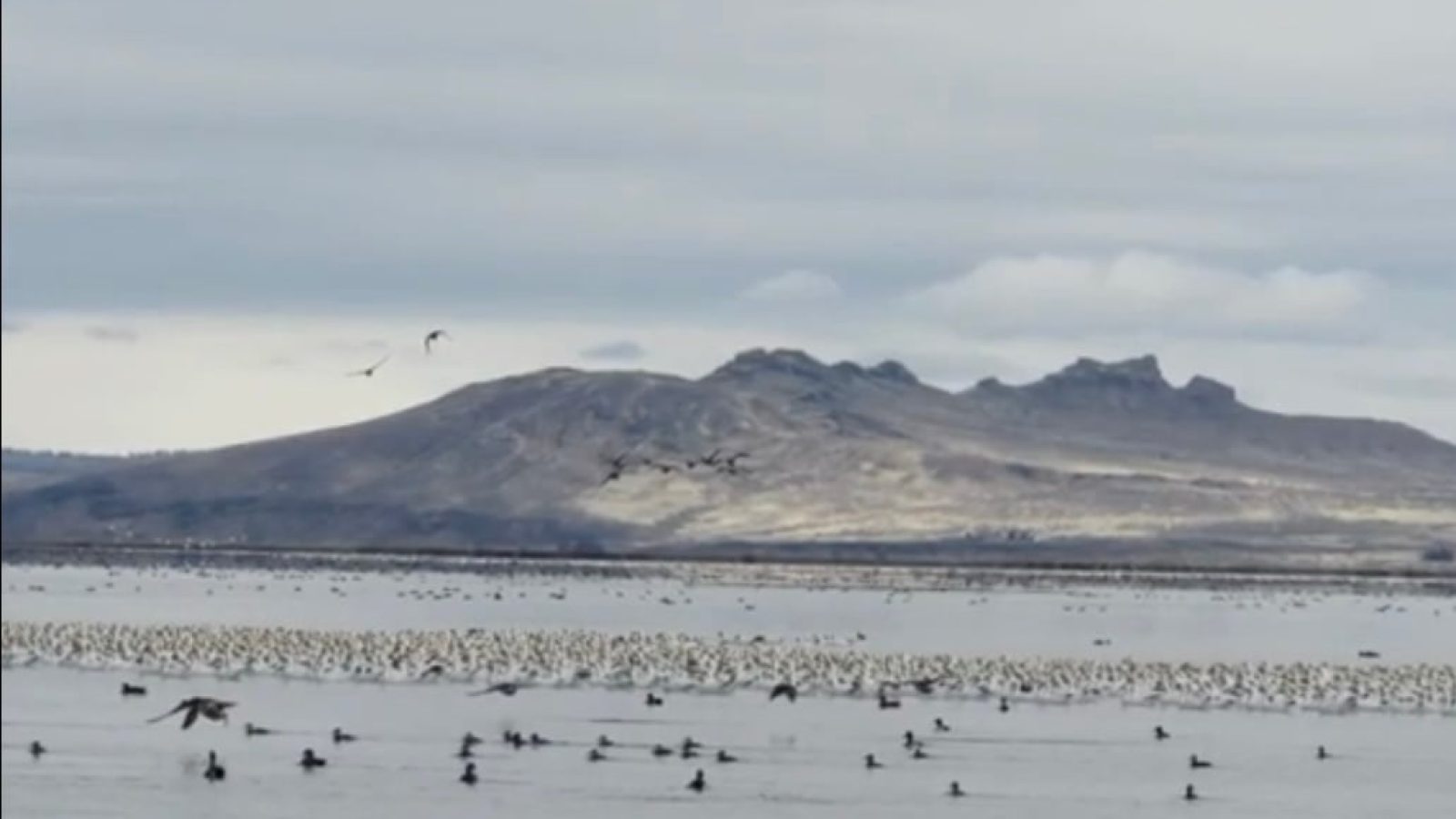The U.S. Fish and Wildlife Service confirmed that a botulism outbreak at Tule Lake National Wildlife Refuge in the Klamath Basin killed an estimated 75,000 to 80,000 birds.
Tule Lake National Wildlife Refuge sits near the California-Oregon border.
“A U.S. Fish and Wildlife Service spokesperson confirmed the outbreak, noting that it’s the worst in the refuge’s recorded history and could continue into early October. Botulism is a serious illness caused by a natural toxin that attacks the nervous system, potentially leading to paralysis and death. Shallow, stagnant water creates the ideal conditions for the toxin to spread,” Rawsalerts wrote.
“Infected birds often show symptoms such as weakness, lethargy, and an inability to walk, fly, or hold their heads up. While exact numbers are difficult to determine, officials estimate that between 75,000 and 80,000 birds have died from botulism at the refuge. The only thing that will halt the spread is the return of rain and cooler weather, as botulism thrives in warm, stagnant water,” the post added.
#BREAKING: Officials estimate that over 75,000 to 80,000 birds have died from a botulism outbreak at the Tule Lake
Officials estimate that tens of thousands of birds have recently died from botulism at the Tule Lake National Wildlife Refuge, near the… pic.twitter.com/Y9ELRT0hma
— R A W S A L E R T S (@rawsalerts) September 21, 2024
Bird Alliance of Oregon wrote:
Bird Alliance of Oregon and 15 other conservation groups sounded the alarm in August when the outbreak began, sending a letter to urge the Bureau of Reclamation to release water to the refuge. Early in the outbreak the Tribes, water users, and waterfowl groups also expressed support for water for wetlands on the refuge. The Bureau of Reclamation delivered 5,000-10,000 acre feet of water to Tule Lake and Lower Klamath NWR on August 17, but while it likely improved conditions, it wasn’t enough to stop the catastrophe.
“On September 15, I saw approximately 500 dead birds in the water, from waterfowl to shorebirds to gulls to songbirds,” explained Teresa Wicks. “The most common species were Northern Shovelers, Northern Pintails, and American Coots, but other species are being affected as well, including songbirds and predators who are either eating the carcasses or the insects off the carcasses. It’s likely we won’t ever know the true death toll since not all birds or mammals will die in the water.”
ADVERTISEMENTHistorically, botulism outbreaks would have infected perhaps hundreds of birds. But, as wetlands continue to shrink and dry up across the Intermountain West, birds are forced into smaller bodies of water. This creates larger concentrations of birds than would occur in a more natural system. In the Klamath Basin alone, more than 90% of wetlands have been lost. This packs birds into available wetlands. Combined with longer warm, dry periods in summer and early fall, this creates perfect conditions for massive, non-natural, outbreaks.
Bird Ally X’s emergency botulism response team is operating its hospital at the refuge seven days a week, saving as many lives as possible. Over the last 18 days, they have treated 835 waterbirds. With appropriate treatment, rescued birds have an excellent recovery rate. So far 288 migratory waterbirds have been released back out into the wild.
75,000 – 80,000 birds dead from botulism near Oregon-California border https://t.co/wURJxoAdrs
— FOX 12 Oregon (@fox12oregon) September 20, 2024
“On September 15, I saw approximately 500 dead birds in the water, from waterfowl to shorebirds to gulls to songbirds,” Teresa Wicks said, according to Bird Alliance of Oregon.
“The most common species were Northern Shovelers, Northern Pintails, and American Coots, but other species are being affected as well, including songbirds and predators who are either eating the carcasses or the insects off the carcasses. It’s likely we won’t ever know the true death toll since not all birds or mammals will die in the water,” she added.
WATCH:
In devastating news, the botulism outbreak at Tule Lake National Wildlife Refuge in the Klamath Basin has now claimed the lives of more than 60,000 birds and counting. For more info and to find out what you can do, click here: https://t.co/VkXmw3h9EI pic.twitter.com/2zQHx8zf6p
— Bird Alliance of Oregon (@BirdAllianceOR) September 18, 2024
This is a Guest Post from our friends over at 100 Percent Fed Up.




Join the conversation!
Please share your thoughts about this article below. We value your opinions, and would love to see you add to the discussion!